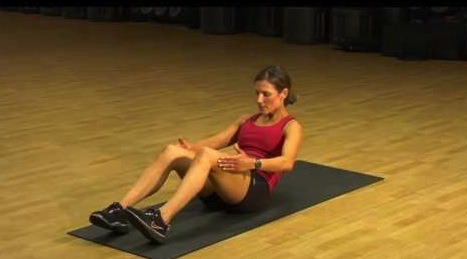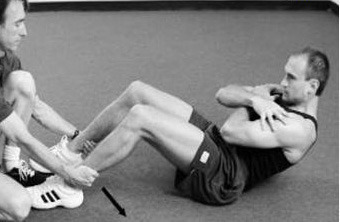Six-pack abs are the bodybuilder’s Holy Grail. A basic challenge for athletes is how to build the abdominal muscles without injuring the back. Many abdominal exercises, such as straight-leg sit-ups, work the hip flexors at the expense of the ab muscles (rectus abdominis, internal and external obliques, transversus abdominis). This makes the exercise less effective for targeting the abdominal muscles and puts excessive strain on the spine. Nearly 50 years ago, therapists suggested that bent-knee sit-ups were superior to straight-leg sit-ups because they minimized the activity of the hip flexor muscles. Unfortunately, biomechanical scientists found that both straight-leg and bent-knee sit-ups produced unacceptable loads on the spine.
Canadian scientists, led by Chad Workman, found that the Janda sit-up maximized the load on the abdominal muscles while minimizing the activity of the hip flexors. The Janda sit-up: Lie on your back with knees bent and feet off the floor and calf muscles supported by a spotter. Do a standard curl-up, while pushing down against the spotter’s hands and contracting your hamstring and glute muscles. Contracting the hams and glutes (hip extensors) inhibits the hip flexors from contracting— a phenomenon called reciprocal inhibition. The Janda sit-up is an effective way to build the ab muscles, while minimizing the load on the spine.


